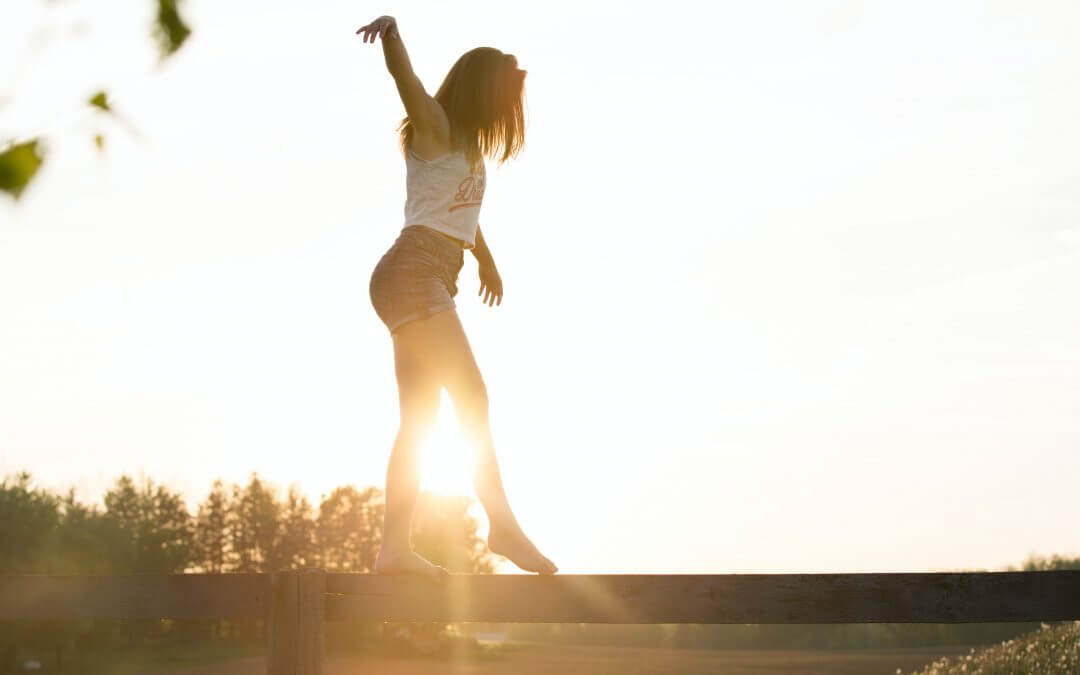Balance is the act of maintaining your centre of mass over your base of support. Without getting into an in-depth physics lesson, the centre of mass is the point at which all your mass is evenly distributed around a single point. It is the point in which, if pushed through this point, your body would move in a straight line in the direction of the push but have no rotation since the push is directly through this centre of the mass point. This point does not have to be within the boundaries of your body and changes as you move. During an Olympic dive the divers’ centre of mass travels outside of their body as they push off and contort their body to create their acrobatic spins. Still with me? The base of support is the area that an object is in contact with a supportive surface. For humans, this means the area under and between your feet. So for people using a cane, crutches, or walker this base of support is much bigger since it also includes the area under and between the gait aid and your feet. Adding a gait aid will make your base of support bigger and you will be more stable. So balance again is the act of maintaining your centre of mass over your base of support. When your centre of mass travels too far outside of your base of support you begin to feel unstable and if it continues to travel further away from your base of support you lose your balance and may fall or stumble. There are many factors this does not take into account such as vision, sensation, particularly in your feet, the environment you are navigating, muscular strength, your food and water intake and many more factors that can positively and negatively affect balance.
Balance can be improved and trained. A simple example of this is when football players crouch down they are lowering their centre of mass to be close to their base of support and are therefore more stable and harder to push around. Adding a gait aid such as a cane or walker will increase your base of support and make you more stable. You can train and improve your balance through several easy changes such as making sure your eyeglass prescription is up to date, you are wearing proper footwear, the environment you are navigating is free of clutter and obstacles and you navigate around potential hazards such as wet or ice-covered surfaces. You can also work to improve your muscular strength and endurance through targeted and guided exercise prescription. You can also train your balance through static and dynamic balance challenging exercises. The difficult part about training this component of balance is that it requires you to put yourself slightly out of balance to work on correcting the change. Although this may seem scary to many people who have compromised balance this can be done in a safe and effective manner. Come see your Absolute Physiotherapy Team for guided, structured exercise prescription to help train and improve your balance!
—
Mike McLeod, PT BSc (Hons – Co-op) Kin MSc PT

